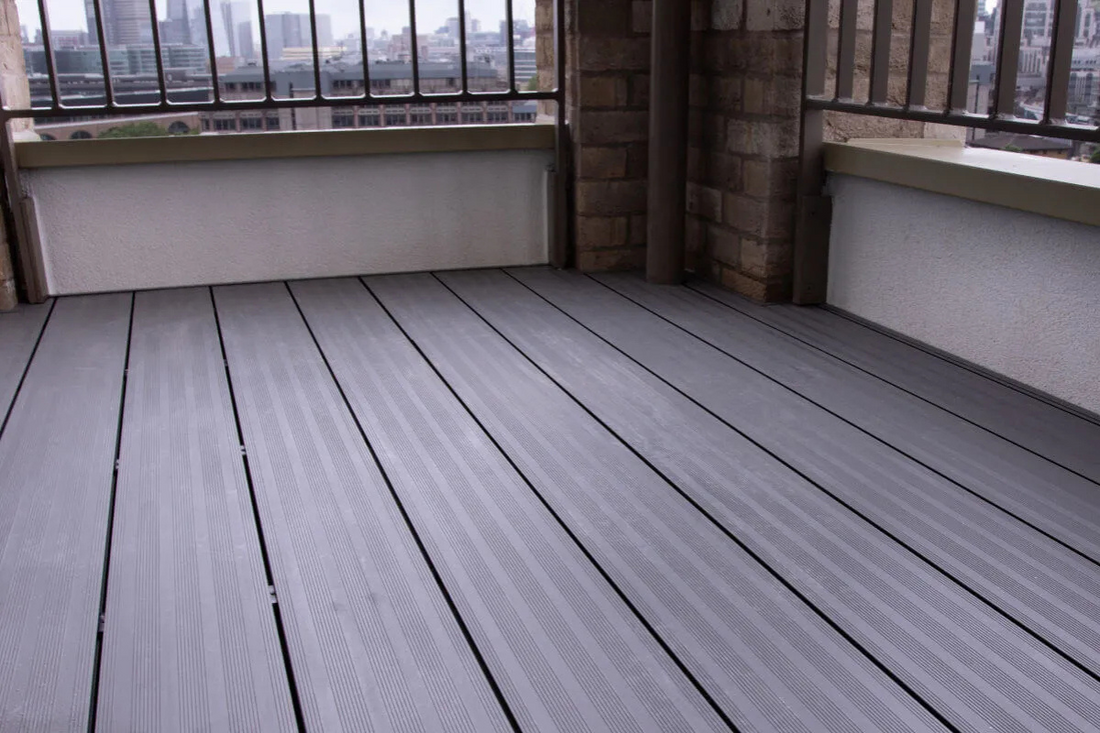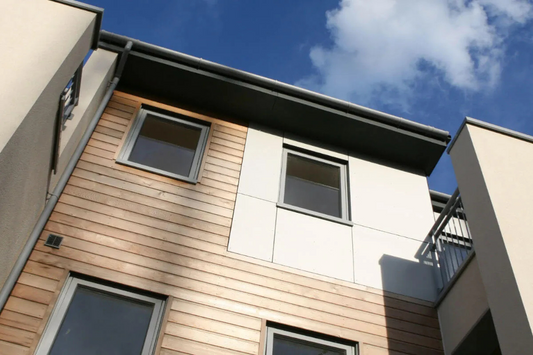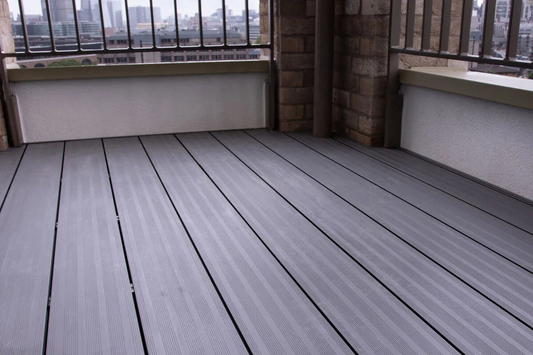
Non-Combustible Decking Regulations
Ensuring the non-combustibility of high-rise buildings, this new legislation undoubtedly offers a safer future for affected residents. However, it was accompanied by widespread uncertainty, leaving many developers and architects with more questions than answers.
Legislation: Overview
This new legislation in England states that the outer walls and attachments of residential buildings of 18 metres or more in height must consist of non-combustible materials, achieving A1 or A2 s1 d0 rating against the European Standard BS EN13501-1.
Any projects previously given the notice of approval by building control and those started before the 28th February 2019 are exempt, as well as commercial properties and hotels. In Scotland, legislation regarding the use of non-combustible materials applies to all buildings over 11 metres in height.
This overarching legislation steers the focus away from the previously used BS8414 whole wall test and is driving balconies towards becoming a non-combustible ‘specified attachment’ to the external wall, leaving an opportunity for new and improved balcony components.
Ongoing Uncertainty and Discussion
Since its unveiling almost a year ago, the clarity of this legislation has been far from concise. Clients, insurers, mortgage lenders, fire engineers and building control are all contributing to a myriad of mixed messages and confusion that architects and developers are struggling to navigate.
Consequently, further questions have been discussed at length regarding the safety of materials on low-rise structures and roof terraces, and whether small elements in construction, such as clips and accessories, should be exempt from the non-combustible law.
Confusion has also surfaced around where measurements are to be taken to determine building height, deciding which properties are and aren’t to be included in the 18-metre limit. This holistic approach comes with a medley of decisions that have been disputed in meeting rooms across the UK, made increasingly difficult by the lack of sufficiently insured assigned certifiers, meaning companies are having to take their own view.
To gain a deeper understanding of what is driving this fear and uncertainty, we need to look beyond the legislation itself to acknowledge the delicate balance of risk and rationality.
Due to ongoing concerns around the suitability of combustible items being used at any height, including those under 18-metres, some clients are requesting complete bans on the use of combustible parts in any future balcony decking system, regardless of the exemptions outlined. In other cases, insurance companies are subsequently refusing warranties.
For example, following a balcony fire, a large residential developer was asked to completely redesign and fit their previously combustible composite decking to meet the new standards, regardless of the historical completion date of the build. Finally, Leaseholders in the Community in a Cube housing block in Middleborough, designed by Fashion Architecture Taste, are being confronted with a £350,000 bill to replace the timber façade previously installed.
Altogether these examples paint a very inconsistent picture. However, aside from the obvious teething issues, there is some room for optimism in London’s prolific Clerkenwell architectural hub. Ongoing changes to legislation are likely to be made in the coming year(s), which may shed some light on these ambiguous grey areas.
The government is also issuing both public and private funding to replace previous decking and cladding for any projects deemed high risk. However, this funding is directed towards the replacement of dangerous ACM (aluminium composite materials), ignoring wood and other flammable plastic materials at risk of fire, therefore making the issue appear smaller than is often reported. With action being taken by many building suppliers, there are now clear and concise solutions available to overcome this legislative hurdle, with more developments and launches to be announced.
Innovation and Safety
Despite the confusion, the indisputable light of this ambiguous change to Part B is that it creates space for the meritocracy of non-combustible materials to form a market in need of newer and safer solutions. Changes to legislation have triggered a wave of new products and innovation in the construction industry, and EnviroBuild aim to be leading this rise of safer, fire-rated solutions.
For further guidance and information, contact our commercial team on +44 (0) 203 959 1220 or email info@envirobuild.com.


